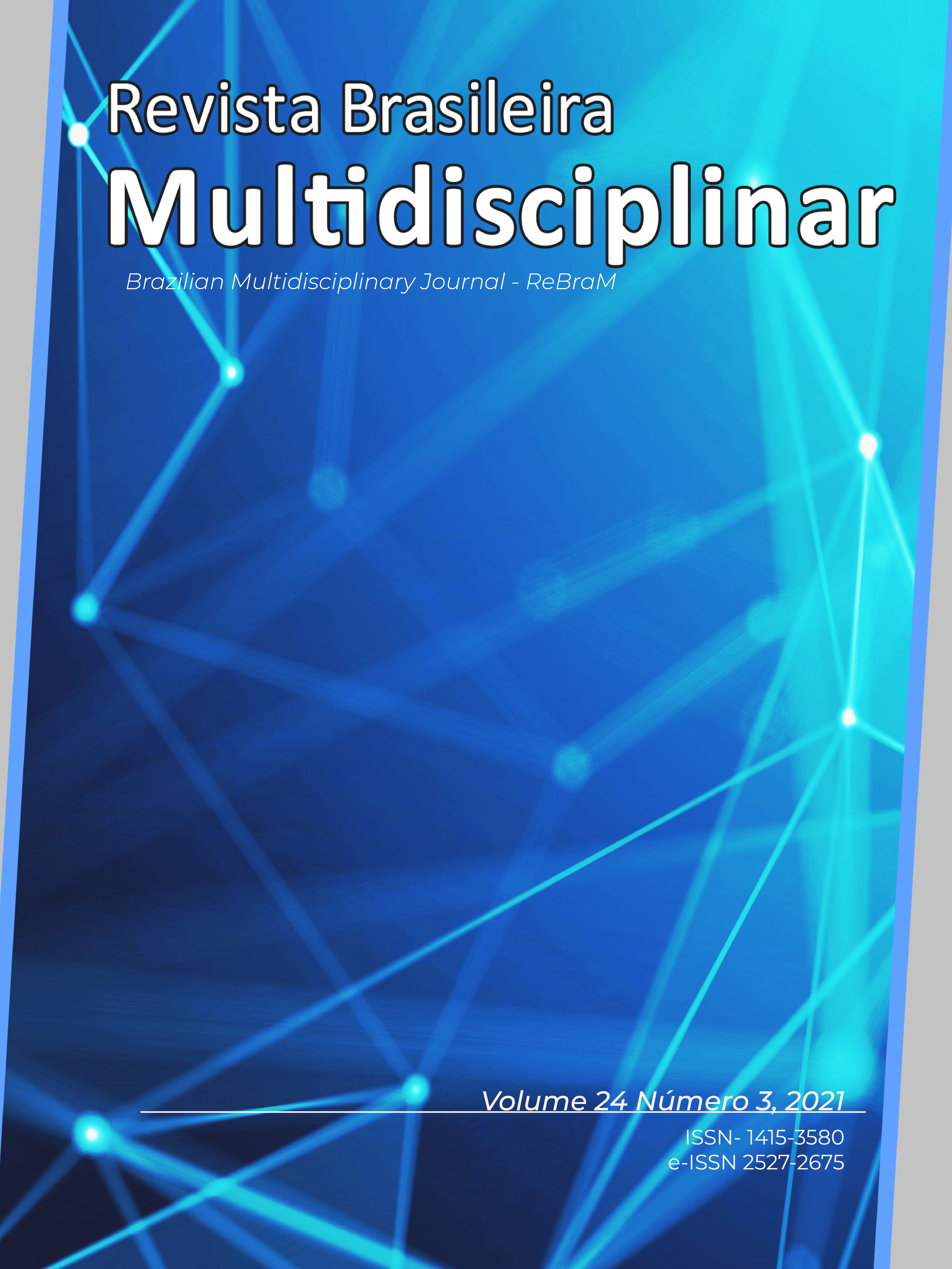Statistical study on the ecological conception of people about the importance of bees
Main Article Content
Abstract
Bees are important insects for the environment, known for their role in pollination. They appeared in the Cretaceous, are related to the appearance of the first flowering plants and are essential for food production. Given this information, knowing people's perception of the ecological importance of these invertebrates is essential for their protection and implementation of awareness-raising efforts. Thus, the objective was to assess people's perception of the ecological importance of bees. The survey was carried out using a Google Forms form, sent to participants through different social networks. 256 people of both sexes were interviewed, with ages between 15 and 70 years old and with different educational levels. People of both sexes, aged between 21 and 50, with different levels of education, had a greater understanding of the importance of bees
Downloads
Article Details

This work is licensed under a Creative Commons Attribution-NoDerivatives 4.0 International License.
• The author (s) warrant that the contribution is original and unpublished and that it is not in the process of being evaluated in other journal (s);
• The journal is not responsible for the opinions, ideas and concepts issued in the texts, as they are the sole responsibility of the author (s);
• Publishers have the right to make textual adjustments and to adapt the article to the rules of publication.
Authors retain the copyright and grant the journal the right of first publication, with the work simultaneously licensed under the Creative Commons Attribution License, which allows the sharing of work with acknowledgment of authorship and initial publication in this journal.
Authors are authorized to take additional contracts separately, for non-exclusive distribution of the version of the work published in this journal (eg publish in institutional repository or as book chapter), with acknowledgment of authorship and initial publication in this journal.
Authors are allowed and encouraged to publish and distribute their work online (eg in institutional repositories or on their personal page) at any point before or during the editorial process, as this can generate productive changes as well as increase the impact and citation of the published work (See The Effect of Free Access) at http://opcit.eprints.org/oacitation-biblio.html
References
ASSOCIAÇÃO BRASILEIRA DE ESTUDOS DAS ABELHAS (ABELHA). Especies.
Disponível em: <https://abelha.org.br/especies/>. Acesso em: 25 jul. 2020.
BALBINO. V. A.; BINOTTO, E.; SIQUEIRA. E. S. Apicultura e responsabilidade social: Desafios da produção e dificuldades em adotar práticas social e ambientalmente responsáveis. REAd. Porto Alegre. ed. 8, n. 2, p. 348-377, 2015.
BYRNE, E. P.; FITZPATRICK, J. J. Chemical engineering in an unsustainable world: obligations and opportunities. Education for Chemical Engineers, v. 4, p. 51-67, 2009.
CASTRO, M. S. A. Comunidade de abelhas (Hymenoptera: Apoidea) de uma área de caatinga arbórea entre os inselbergs de Milagres, Bahia. Tese de Doutorado – Instituto de Biociências, Universidade de São Paulo. São Paulo, SP, 2001.
FAO. Conservation and management of pollinators for sustainable agriculture. The international response. In: Freitas, B. M. & Pereira, J. O. P. (Org.). Solitary Bees: Conservation, Rearing and Management for Pollination. Fortaleza, CE, Brazil. Imprensa Universitária, Federal University of Ceará. p. 19-25, 2004.
FERNANDES, R. S., et al. Uso da percepção ambiental como instrumento de gestão em aplicações ligadas às áreas educacional, social e ambiental, 2009. Disponível em: Acesso em: 06 de julho de 2020
FREITAS, B. M. Conhecendo as abelhas. Disponível em:http://www.abelhas.ufc.br/documentos/conabelhas.pdf. Acesso em: 25 jul. 2020.
GULLAN, P. J.; CRANSTON, P. S. Os insetos: um resumo de entomologia. 4 ed. São Paulo: Roca, 2012. 480 p.
IFSULDEMINAS. Curso do IF sobre abelhas sem ferrão capacita mulheres em situação de vulnerabilidade. Instituto Federal do sul de Minas Gerais. Acesso: https://portal.pcs.ifsuldeminas.edu.br/noticias/2750. Acesso em: 06 de julho de 2020.
LOPES, M.; FERREIRA J. B.; SANTOS, G. Abelhas sem-ferrao: a biodiversidade
invisível. Agriculturas, n. 2, p. 7-9, 2005.
MICHENER, C. D. The social behavior of bees: a comparative study. Cambridge: The Blacknap Press. 1974.
MONTENEGRO, I. F.; ALENCARI, B. R.; SILVA, E. F.; LUCENA, R. F. P.; BRITO, C. H. Conhecimento, percepção e uso de animais categorizados como “insetos” em uma comunidade rural no semiárido do estado da Paraíba, Nordeste do Brasil. Gaia Scientia. Volume Especial Populações Tradicionais: 250-270 Versão Online, 2014. ISSN 1981-1268 http://periodicos.ufpb.br/ojs2/index.php/gaia/index
PAIXÃO, G. P. G. MARTINEZ, F. R. V. Análise da percepção dos estudantes do ensino médio da cidade do Rio de Janeiro sobre as abelhas: quanto realmente sabemos sobre elas? Revista Brasileira de Educação Ambiental Revbea, São Paulo, v 13, n. 3, p. 263-274, 2018. DOI: 10.34024/revbea.2018.v13.2661
PEREIRA, F. M. Abelhas sem ferrão a importância da preservação. 2005. Disponível em: <http://www.embrapa.br/noticias/artigos/folder.2005-02-02.1550581232/artigo.2005-12 29.3499364899/mostra_artigo. 20 outubro 2006. Acesso em: 15 mai. 2020.
PINTO, C. L.; BAMPI, A. C.; GALBIATI, C. Importância das abelhas para a biodiversidade na percepção de educandos de Cáceres, MT. Revista Ibero-Americana de Ciências Ambientais, v. 9, n. 1, p. 152-163, 2018. DOI: http://doi.org/10.6008/CBPC2179-6858.2018.001.0011
RAMOS, S. K; KAWADA, R.; KAWADA, C. R. F. Papeis avulsos de Zoologia. v. 55, n.24, p. 335-361, 2015. ISSN 1807-0205.
ROUBIK, D. W. Ecology and natural history of tropical bees. England: Cambridge
University Press., 1989.
SANTOS, A. B. Abelhas nativas: polinizadores em declínio. Natureza on-line. v. 8 n. 3, p. 103-106, 2010. ISSN 1806–7409.
SCHOENFELDER, M. L, BOGNER, F. X. Individual perception of bees: Between perceived danger and willingness to protect. PloS ONE. v. 12, n. 6, 2017. https://doi.org/10.1371/journal. Pone.0180168
SERVIÇO BRASILEIRO DE APOIO ÀS MICRO E PEQUENAS EMPRESAS – SEBRAE. Revista SEBRAE Agronegócios, n. 3, 2006. Disponível em: <http://www.biblioteca.sebrae.com.br/bds/BDS.nsf/5EC21315390BAAB98325733A004CA9E0/$File/rev_agronegocio3.pdf>. Acesso em: 15 jul. 2020.
VELOZO-SILVA, G. Influência da cobertura florestal na diversidade de polinizadores e na polinização em agroecossistemas. 2019. 94f. Dissertação (Mestrado em Ciências Ambientais) - Universidade Federal de Alfenas, Alfenas, 2019.
ZAMPIERON, S. L. M.; FAGIONATO, S.; RUFFINO, P. H. P. Ambiente, Representação Social e Percepção. In: Schiel, D. et al. (orgs./eds.) O estudo de bacias hidrográficas: uma estratégia para educação ambiental. São Carlos: Ed. RiMa. 2ª ed. 2003.





